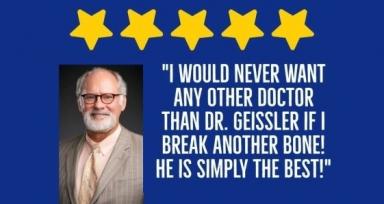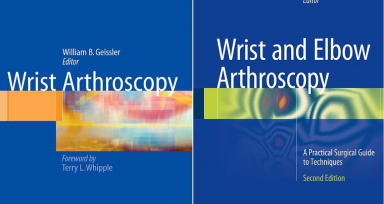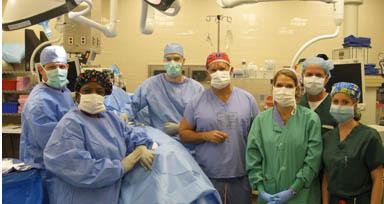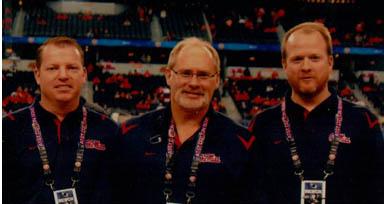Click a link below to read more information about the procedure.
- Shoulder Arthroplasty
- Rotator Cuff Arthropathy
- Clavicle Fixation
- Clavicle Delayed on Nonunion
- Scapula Fracture
- Proximal Humerus Fracture
- AC Reconstruction with Lockdown Technique
- Impingement Syndrome
- Rotator Cuff Tears
- Adhesive Capsulitis (frozen shoulder)
- AC Joint Arthrosis (Weightlifters Clavicle)
- Labral Tears (SLAP lesions)
- Shoulder Instability
- Calcific Tendinitis
- Shoulder Arthroscopic Surgery
There are many indications for arthroplasty to the shoulder. This includes bone deformity from osteoarthritis, rheumatoid arthritis, posttraumatic osteoarthritis, and avascular necrosis to the humeral head. In addition, occasionally patients who have a severe fracture to the shoulder that is not repairable may undergo joint replacement. A wide variety of shoulder replacements are now available due to the wide variety of conditions which can cause arthritis to the glenohumeral joint. This wide variety of shoulder replacements allows the surgeon to customize the exact type of shoulder replacement to the patient. This may include focal replacement, hemi cap replacement, hemi arthroplasty, and total shoulder arthroplasty. Dr. Geissler worked with the engineers from Integra with an international team of orthopaedic surgeons to co-design the Integra Titan total shoudler replacement and reverse shoulder arthoplasty. This unique design implant is made to save as much bone as possible during replacement and is extremely modular to be customized to the patient. The total shoulder is easily convertible to the reverse shoulder arthroplasty in this system.
Rotator cuff arthropathy is secondary to a massive tear of the rotator cuff which has allowed the proximal humerus to sit proximally against the acromion. This incongruency results in arthritis to the glenohumeral joint. Patients frequently have had a longstanding tear of the rotator cuff that is not surgically addressed. When this occurs, the rotator cuff retracts usually toward the scapula and becomes unrepairable. The tear gets so big that it cannot be brought back out to length to repair back to the humerus. In addition, several patients may have previous attempts at rotator cuff repair but the tear was so large it could not heal back to the humerus. Patients frequently complain of constant pain to the shoulder day and night. In addition, due to the massive tear of the rotator cuff, most patients have very limited flexion to the shoulder. In elderly patients with this condition, reverse shoulder arthroplasty may be a perfect solution.
In reverse shoulder arthroplasty, the ball is placed on the glenoid or shoulder blade side. A cup-like intramedullary device is placed on the humerus side. The humerus is reduced underneath the glenoid. In this technique, now the deltoid is now solely responsible for active flexion to the shoulder. This is a very good option for patients with massive tears of the rotator cuff that are not repairable in elderly patients. Reverse shoulder arthroplasty frequently results in a significant decrease in pain and significant improvement of active motion to the shoulder.
The potential biggest complications as a result of reverse shoulder arthroplasty would be dislocation of the prothesis and loosening of the glenoid component. For this reason, the patient is immobilized in a sling for approximately six weeks following the surgery. Active range of motion exercises are then initiated. Because of the potential risk of loosening of the glenoid component, this procedure is recommended in elderly patients. The advantage of reverse shoulder arthroplasty particularly in elderly patients with a massive tear of the rotator cuff is that postoperative rehabilitation is significantly decreased as compared as a massive rotator cuff repair with a lower prognosis.
Clavicle injuries are frequent fractures to the shoulder girdle. It is estimated that one in 20 fractures involve the clavicle and approximately 45% of all shoulder girdle injuries involve a fractured clavicle. The clavicle is a very unique S-shaped bone which has multiple functions including rotating the scapula with forward flexion to the shoulder and protection of the important neurovascular structures as they pass down the upper extremity. Dr. Geissler worked with the engineers from Acumed to design a system of plates specifically designed to fit the unique anatomy of the clavicle. This system of plates is currently used all over the world for fixation of clavicle fractures.
Occasionally, despite operative fixation, the clavicle will not heal. If the fracture does not heal, due to repetitive stress to the implant, the implant can break or the screws can loosen. Further operative intervention is then indicated. In this video, dual plate fixation was recommended. In this manner, both a superior and anterior plate is placed at right angles for dual plate fixation. Dual plate fixation provides a very stable construct to allow the fracture to heal. In this video, plates provided by New Clip were utilized.
Scapula fractures are relatively rare as compared to clavicle. It is estimated that 3-5% of all shoulder girdle fractures involve that of the scapula. Because the scapula is so well surrounded by muscle, it takes a relatively high energy trauma to fracture the scapula and is usually associated with multiple systemic body injuries. Indications for fixation of the scapula are still evolving. Previously, however, plates that were designed specifically for fixation to the scapula had to be pre-bent which involved considerable operating time. Dr. Geissler worked with the engineers from Acumed to design plates specifically designed for fixation of scapula fractures. This makes fixation of the scapula easier as the precontoured plates help with reduction and decreases operative time as a significant amount surgical time is not required to pre-bend the plates.
Fractures of the proximal humerus comprise approximately 5% of all fractures. However, the incidence of proximal humerus fractures is increasing as the population ages. These fractures are more common in females. Fortunately, approximately 80% are minimally displaced and do not require fixation. When a fracture of the proximal humerus is very displaced or involvles multiple fragments, fixation may be recommended. Dr. Geissler worked with a team from Integra to design a greater tuberosity proximal humeus plate. This plate has multiple features designed specifically to treat fractures of the proximal humerus.
Hemiarthroplasty is sometimes indicated in very comminuted fractures of the proximal humerus. When the head of the humerus is completely void of soft tissue attachment, it can lose its blood supply, which leads to necrosis. In very comminuted fractures, particularly in younger patients that cannot be stabilized, hemiarthroplasty or reverse shoulder arthroplasty may be indicated. Dr. Geissler collaborated with an international group of surgeons to produce the Integra Total Shoulder System. This system includes a press fit stem and specific fracture body to address these very comminuted fractures. It is felt that with a smaller body that potentially there is a higher chance of union to the tuberosities and by avoiding cement dramatically decreases the surgical time and makes for easier revisions if required in the future.
ORIF of Proximal Humerus Fracture with the anatomic GT Plating System
AC Reconstruction with Lockdown Technique
An AC separation is a result of separation of the ligament that connects the scapula to the clavicle. A mechanism of injury is a direct blow on top of the shoulder. There are various degrees of shoulder separations. Particularly, in the lower degrees of separation, non-operative treatment is usually recommended. In higher degrees of separation, or in athletes or frequent overhead workers, stabilization of the unstable shoulder may be required. The lock down device has been recently released in the market in the United States and has been very successful. This device wraps around the coracoid and on top of the clavicle to hold it down to stabilize the separation.
Many disorders of the shoulder may be managed arthroscopically. The advantage of arthroscopic management as compared to traditional open surgery is potentially less postoperative pain and scarring. The scarring can result in a decreased range of motion. Disorders of the shoulder that may be managed arthroscopically include impingement syndrome (rotator cuff tendinitis), arthritis of the distal end of the clavicle (AC joint arthrosis), rotator cuff tears, calcific tendinitis, adhesive capsulitis (frozen shoulder), labral tears including SLAP lesions, and shoulder instability.
Impingement syndrome or rotator cuff tendinitis is probably the most common indication for shoulder arthroscopy. Patients with impingement syndrome typically have pain at night and cannot sleep on their involved shoulder. It hurts to elevate and reach behind their back. Frequently, they do repetitive overhead work and put a lot of stress and strain on the shoulder. Impingement syndrome is encroachment of the acromion, coracoacromial ligament, or coracoid on the rotator cuff mechanism. This can result in chronic inflammation to the rotator cuff. The vast majority of the time rotator cuff tendinitis responds well to a conservative management program including physical therapy. However, occasionally patients continue to experience continued pain with the shoulder. In this instance, an arthroscopic shoulder decompression may be performed.
The procedure is performed on an out patient basis with three poke holes the size of a pencil around the shoulder. The shoulder is evaluated intraarticularly and then the arthroscope is placed in the subacromial space underneath the acromion. Here the undersurface of the acromion and coracoacromial ligament is released to provide more room for the rotator cuff for range of motion. The procedure takes approximately 30‑45 minutes to perform. Patients wear a dressing for three days and then place a band aid on the three portals and can initiate showers. Range of motion to the shoulder is initiated as soon as the patient tolerates. There would be no restrictions to the shoulder as there are no sutures and then the muscle has been taken down to get to the shoulder itself. Patients notice a significant improvement in their pain and range of motion usually by 6‑12 weeks.
Tears of the rotator cuff generally occur in patients over the age of 40. The rotator cuff tendon starts to lose its vascularity as we all age predisposing it to eventual tearing. Patients frequently recall a sudden episode when they felt a pop and intense pain to the shoulder. An immediate increased range of motion is observed. Patients frequently also complain of night pain as well. It is important to remember that the muscle attached to the rotator cuff tendon is always contracting. Once the tendon has pulled away from its insertion onto the humerus it cannot reattach itself unless surgically repaired. Most tears of the rotator cuff probably start small and if not surgically addressed progress in size. For this reason, particularly in acute traumatic tears of young individuals surgical repair is usually recommended.
Tears of the rotator cuff may be fixed arthroscopically or may require a small incision on the lateral side of the shoulder for its repair depending on the size of the tear. In arthroscopic repair, four portals about the shoulder are made. A rotator cuff anchor is inserted into the bone. The anchor fits inside the bone and cannot be felt by the patient. Sutures attached to the anchor are arthroscopically inserted through the rotator cuff and tied, pulling the tendon back down to bone. Occasionally in larger tears, a small (mini deltoid) incision is made about the lateral side of the arm. In this manner, particularly the rotation of the torn rotator cuff may be addressed to help reinsert it to the humerus. Arthroscopic repair of the rotator cuff is usually performed on an out patient basis. Patients who have a large massive tear of the rotator cuff may stay overnight for 23‑hour observation depending on their preference.
Passive range of motion of the shoulder is then performed for approximately four weeks following repair. Active assisted exercises are then initiated four weeks following the surgery. At six weeks, strengthening to the rotator cuff repair is then initiated. Patients usually note significant improvement in their range of motion and strength by three months postoperatively. In patients with massive tears of the rotator cuff, frequently an abduction pillow is utilized to help decrease the tension of the repair and help with pain relief. In these patients, who comprise a small percentage, range of motion and strengthening exercises are delayed slightly to help decrease the risk of re-rupture of the repair.
Adhesive Capsulitis (frozen shoulder)
Adhesive capsulitis is a fairly common condition that generally occurs in females between the ages of 40 and 60. Usually it is an etiopathic condition meaning there is no specific cause for the disorder. In this process, the capsule of the shoulder becomes inflamed and sticks to itself decreasing the volume to the shoulder joint. The shoulder is the most mobile joint in the body allowing us to move the arm in any direction. When the volume of the capsule decreases, this decreases the range of motion. Patients with adhesive capsulitis generally go through three phases and each phase can last 6‑9 months. The first phase is the patient notes acute pain and decreased range of motion. In the second phase, the pain gets better but the loss of motion persists. In the third phase, the range of motion significantly improves to nearly full range of motion. The majority of the time, patients with adhesive capsulitis are able to treat it through physical therapy. This helps stretch out the shoulder so that restriction of motion is not noticed as much by the patient allowing him to tolerate the various phases. In some patients, the loss of motion persists despite the physical therapy and surgical intervention is required. Patients who are diabetic have a higher incidence of adhesive capsulitis as compared to non-diabetics.
Surgical intervention requires passive manipulation of the shoulder to help free up adhesions. The traditional three portals, the size of pencils, are then made around the shoulder. The capsule may be released around the glenoid to help further improve the range of motion. Frequently, patients also have adhesions in the subacromial space. This is the space between the acromion and the rotator cuff. These may be débrided out and acromioplasty may be performed to further improve the space between the acromion and the rotator cuff tendons to improve range of motion. The procedure is performed on an out patient basis. Patients are started on immediate range of motion to help decrease the chance of reoccurrence of the adhesions. A dressing is worn for three days, and then a band aid is applied onto the three portals.
AC Joint Arthrosis (Weightlifters Clavicle)
Arthritic changes to the distal end of the clavicle are common as we age. In some patients, this becomes symptomatic. Patients are point tender right on top of the shoulder and with bringing the arm across the body. This is a frequent condition particularly in weightlifters who do a lot of bench pressing. As this loads the acromioclavicular joint, patients develop pain at that joint, which limits their activities. Non-operative management generally involves rest. If the joint continues to be inflamed and limits patient’s activities, then arthroscopic excision of the distal end of the clavicle may be performed. Arthroscopically excising the distal end of the clavicle leaves a gap where the clavicle and the acromion can no longer rub decreasing the patient’s pain.
In the arthroscopic procedure, the glenohumeral joint is evaluated. The arthroscope is then placed in the subacromial space and the distal end of the clavicle may be arthroscopically removed. The advantage of arthroscopic excision is the clavicle is excised from inferior to superior leaving the ligaments attached to the superior aspect of the joint. This helps decrease the risk instability to the distal end of the clavicle. The procedure takes approximately 30 minutes to perform and is performed on an out patient basis. Patients wear a dressing for three days and then band aids are placed on the three portals. Range of motion and strengthening are initiated as the patient tolerates and there are no restrictions.
Labral tears are a frequent indication for shoulder arthroscopy. SLAP lesions stand for superior labrum anterior posterior. SLAP lesions usually occur when the patient falls on an outstretched arm jamming the humeral head proximally or falls where the patient reaches forth to grab an object to break a fall and a traction injury occurs to the arm. The biceps tendon attaches to the superior labrum of the shoulder. When either of these has been injured, a part of the superior labrum may be detached from the glenoid. Patients with a SLAP lesion generally feel popping and catching sensations into the shoulder. It hurts at night. They have to move their arm in a certain way to help take tension off the shoulder.
Arthroscopic repair of these lesions is ideal. By percutaneously inserting the arthroscope instrumentation avoids detaching a large amount of muscle to get to the shoulder joint. Arthroscopic evaluation allows easy visualization of the labral detachment under bright light and magnified conditions. Similar to a rotator cuff repair, an anchor is inserted into the bone with sutures. The sutures are then passed through the labrum and tied securing the labrum back down to the bone so it can heal. This procedure is performed on an out patient basis and takes approximately 30‑45 minutes to perform.
It takes approximately six weeks for soft tissues to heal back to bone. Range of motion exercises are initiated during those first six weeks and then strengthening is performed. It takes patients approximately three months for significant clinical improvement.
Something has to tear when a shoulder is dislocated. In younger patients, this usually involves the ligaments as they hold the humeral head in place. They frequently tear off the insertion onto the glenoid. It is controversial, when a patient dislocates the shoulder for the first time, whether it should be repaired or whether to allow the ligament to heal non‑operatively. When a shoulder dislocates, the ligaments will heal. The problem is the ligaments usually heal slightly attenuated or stretched out from the injury. This can predispose the patient to further recurrent dislocations.
Arthroscopic repair of torn ligaments from the shoulder dislocation is very minimal arthroscopically. Again, the ligaments can be addressed arthroscopically under bright light and magnified conditions without taking down a large amount of muscle to get to the shoulder. Similar to a SLAP repair, an anchor is inserted into the bone of the glenoid. The torn ligament can be seen readily identified arthroscopically. Sutures are then placed through the ligament of the capsule of the shoulder and are tied pulling the ligaments back to the bone. Usually the ligaments are advanced onto the bone to tighten the ligaments to help decrease the risk of reoccurrence. As soft tissues take approximately six weeks to heal back to bone, range of motion exercises are initiated the first six weeks and then strengthening. This procedure takes approximately one hour to perform and is performed on an out patient basis. Three poke holes are placed about the shoulder. Patients note significant improvement in their range of motion and strength by three months.
Calcific tendinitis is relatively a rare condition where the body lays calcium deposits into the rotator cuff itself. This can be very painful. Usually, the pain can be improved through physical therapy and potentially cortical steroid shot into the subacromial space.
Arthroscopic intervention is recommended when patients continue to complain of symptoms despite conservative management. Arthroscopically, the calcium deposits can be teased out of the rotator cuff tendon. This procedure is performed through three poke holes about the shoulder and takes approximately 45 minutes to perform. Patients frequently have significant relief of the pain immediately following the procedure due to decompression of the tendon by debulking the calcium deposits. A dressing is worn for three days, the dressing is removed and band aids are placed on the three portals. Range of motion and strengthening are initiated following the procedure as the patient can tolerate. There are no restrictions. Patients usually note significant improvement of their pain in 3‑6 weeks following the procedure.






